-
 Bitcoin
Bitcoin $94,358.7162
-1.15% -
 Ethereum
Ethereum $1,812.9071
-0.81% -
 Tether USDt
Tether USDt $1.0002
0.01% -
 XRP
XRP $2.1643
-1.14% -
 BNB
BNB $591.6919
-0.45% -
 Solana
Solana $145.0687
-0.19% -
 USDC
USDC $0.9998
-0.02% -
 Dogecoin
Dogecoin $0.1724
-1.01% -
 Cardano
Cardano $0.6752
-2.41% -
 TRON
TRON $0.2473
-0.26% -
 Sui
Sui $3.4002
5.50% -
 Chainlink
Chainlink $13.8049
-1.83% -
 UNUS SED LEO
UNUS SED LEO $9.0161
-0.39% -
 Avalanche
Avalanche $19.6872
-2.14% -
 Stellar
Stellar $0.2658
-1.47% -
 Shiba Inu
Shiba Inu $0.0...01275
-1.82% -
 Toncoin
Toncoin $2.9982
-3.35% -
 Hedera
Hedera $0.1747
-2.18% -
 Bitcoin Cash
Bitcoin Cash $355.6156
-0.69% -
 Hyperliquid
Hyperliquid $20.3552
-1.12% -
 Litecoin
Litecoin $88.2979
2.82% -
 Polkadot
Polkadot $3.9271
-1.07% -
 Dai
Dai $1.0001
0.00% -
 Monero
Monero $277.9997
2.43% -
 Bitget Token
Bitget Token $4.3084
-0.53% -
 Ethena USDe
Ethena USDe $1.0002
-0.03% -
 Pi
Pi $0.5907
-0.27% -
 Pepe
Pepe $0.0...08184
0.25% -
 Aptos
Aptos $5.1004
-0.85% -
 Uniswap
Uniswap $5.0101
-0.89%
Download digital currency wallet software
When choosing a digital currency wallet, consider security measures such as two-factor authentication, encrypted storage, and multi-signature support.
Jan 12, 2025 at 09:16 am
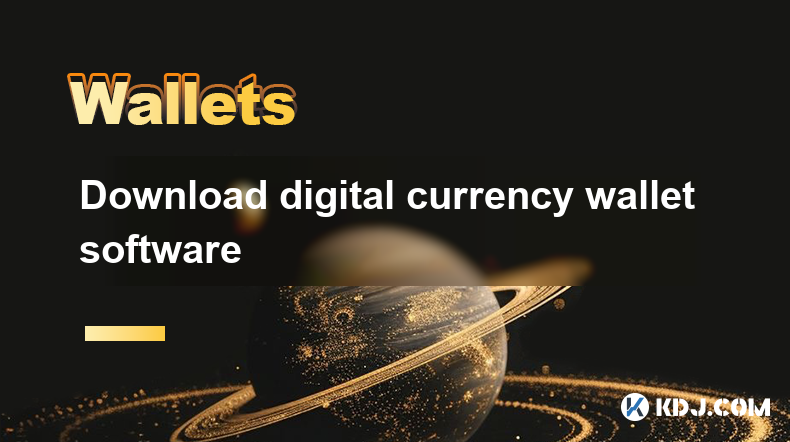
Key Points:
- Types of digital currency wallets
- Features to consider when choosing a wallet
- Step-by-step guide to downloading and setting up a digital currency wallet
- Best practices for securing your digital assets
Types of Digital Currency Wallets
Digital currency wallets come in various types, each offering unique features and security levels:
- Software wallets: Installed on your computer or mobile device, software wallets provide convenient access to your funds. They offer a range of options from basic to feature-rich, including custodian (hosted) and non-custodian (self-hosted) wallets.
- Hardware wallets: Physical devices that store your private keys offline, hardware wallets offer the highest level of security. They are not connected to the internet, making them less vulnerable to hacking.
- Paper wallets: Printable sheets that contain your public and private keys, paper wallets are suitable for long-term storage or offline transactions. They require a QR code reader and a wallet software to access the funds.
- Web wallets: Accessed through a web browser, web wallets are hosted by third-party providers and offer ease of use. However, they are less secure than other types of wallets due to their online nature.
Features to Consider When Choosing a Wallet
When selecting a digital currency wallet, consider the following features:
- Security: Look for wallets that provide robust security measures, such as two-factor authentication, encrypted storage, and multi-signature support.
- Privacy: Choose wallets that prioritize user privacy by not collecting or sharing personal information.
- Functionality: Consider wallets that meet your specific needs, such as support for multiple currencies, exchange integration, or advanced trading features.
- Reputation: Research the wallet provider's reputation in the cryptocurrency community, including reviews and security audits.
- Cost: Digital currency wallets can range in cost from free to subscription-based. Evaluate the value provided by the wallet and its features against the cost.
Step-by-Step Guide to Downloading and Setting Up a Digital Currency Wallet
- Choose and download a wallet: Select a wallet from the available types, research its features, and download it from the provider's official website or app store.
- Create a new wallet: Launch the wallet and follow the prompts to create a new wallet. Choose a strong password and write it down for backup purposes.
- Backup your wallet: It is critical to back up your wallet's seeds or private keys. Store them offline in a secure location, such as a password manager or a physical safe.
- Fund your wallet: Transfer funds from an exchange or another wallet to your newly created wallet. Follow the instructions provided by the wallet software.
- Manage your assets: Use the wallet to track balances, send and receive transactions, and interact with blockchain applications.
Best Practices for Securing Your Digital Assets
- Use strong passwords: Create unique and complex passwords for your wallet software and exchange accounts.
- Enable two-factor authentication (2FA): Add an extra layer of security by enabling 2FA, which requires a second device or code to access your funds.
- Keep your software up to date: Regularly update your wallet software to ensure it has the latest security patches.
- Avoid phishing scams: Be cautious of emails or websites asking for your private keys or passwords. Legitimate wallet providers will never ask for these details.
- Store your funds in a hardware wallet: For optimal security, store your funds in a hardware wallet, which is not connected to the internet and offers protection from online threats.
FAQs
- Q: What is the best digital currency wallet?
A: The best wallet depends on your individual needs and preferences. Consider security, privacy, functionality, reputation, and cost when making your choice. - Q: How can I protect my digital currency wallet from hacking?
A: Implement strong security measures such as strong passwords, 2FA, and up-to-date software. Avoid phishing scams and store your funds in a hardware wallet for maximum protection. - Q: How do I transfer funds from an exchange to a digital currency wallet?
A: Refer to the instructions provided by the wallet software. Typically, you will need your wallet's address to initiate the transfer from the exchange.
Disclaimer:info@kdj.com
The information provided is not trading advice. kdj.com does not assume any responsibility for any investments made based on the information provided in this article. Cryptocurrencies are highly volatile and it is highly recommended that you invest with caution after thorough research!
If you believe that the content used on this website infringes your copyright, please contact us immediately (info@kdj.com) and we will delete it promptly.
- Remittix (RTX) Joins the Mix as Markets Are Shaken by Cardano Price Prediction
- 2025-05-05 18:20:12
- As Bitcoin pursues $100K on enhanced optimism, crypto enthusiasts explore narratives that could fuel the upcoming broad-based rallies.
- 2025-05-05 18:20:12
- Solana Developers Have Discreetly Patched a Critical Zero-Day Vulnerability
- 2025-05-05 18:15:12
- Meme Coins Defy Market Downturn: May 2025 Outlook and Q2 Forecast
- 2025-05-05 18:15:12
- Meme Coins Defy Market Downturn: May 2025 Outlook and Q2 Forecast
- 2025-05-05 18:10:12
- Remittix (RTX) Price Prediction: Can the Cross-Border Payment Network Reach $1 by 2025?
- 2025-05-05 18:10:12
Related knowledge
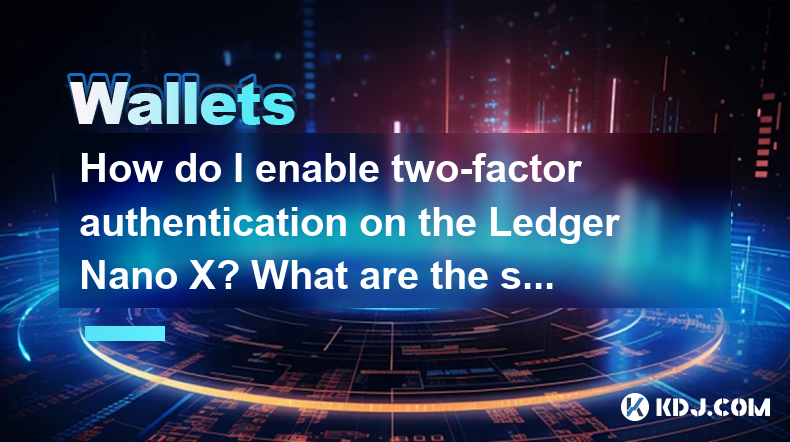
How do I enable two-factor authentication on the Ledger Nano X? What are the security options?
May 02,2025 at 09:49pm
Enabling two-factor authentication (2FA) on your Ledger Nano X is a critical step in securing your cryptocurrency assets. The Ledger Nano X offers robust security options that enhance the protection of your digital wealth. In this article, we will guide you through the process of enabling 2FA on your Ledger Nano X and explore the various security featur...
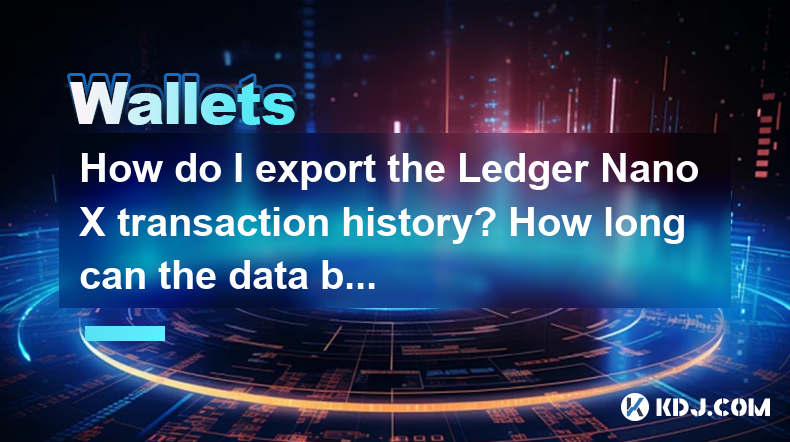
How do I export the Ledger Nano X transaction history? How long can the data be saved?
May 04,2025 at 07:21am
Introduction to Ledger Nano X and Transaction HistoryThe Ledger Nano X is a hardware wallet designed to store your cryptocurrency safely. It supports a wide range of cryptocurrencies and offers robust security features. One of the essential aspects of managing your cryptocurrencies is keeping track of your transaction history. The Ledger Nano X allows y...
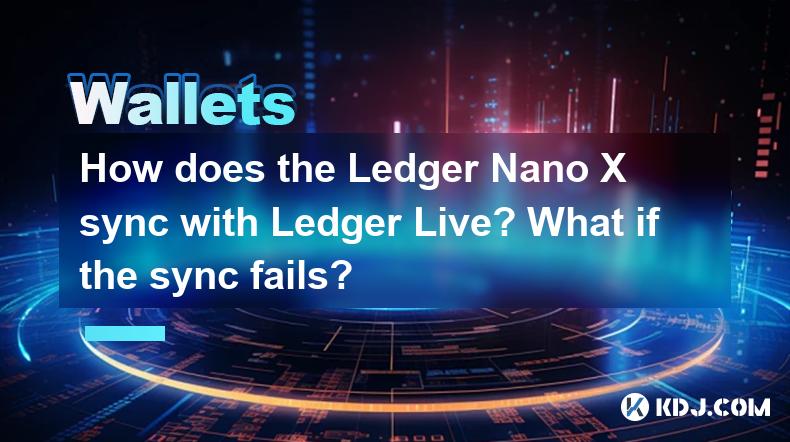
How does the Ledger Nano X sync with Ledger Live? What if the sync fails?
May 04,2025 at 12:07pm
The Ledger Nano X is a popular hardware wallet that allows users to securely manage their cryptocurrency assets. One of the key features of the Ledger Nano X is its ability to sync with the Ledger Live application, which provides a user-friendly interface for managing your crypto portfolio. In this article, we will explore how the Ledger Nano X syncs wi...
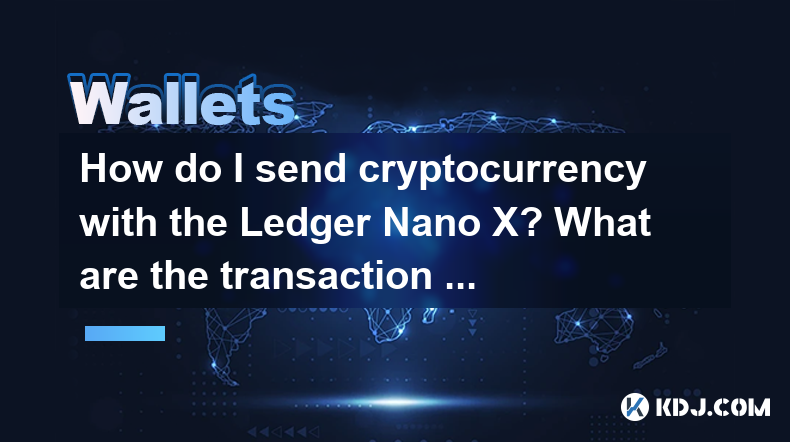
How do I send cryptocurrency with the Ledger Nano X? What are the transaction confirmation steps?
May 03,2025 at 05:01am
Sending cryptocurrency using the Ledger Nano X involves a series of steps that ensure the security and accuracy of your transactions. This process is designed to be user-friendly while maintaining the high level of security that Ledger devices are known for. In this article, we will guide you through the process of sending cryptocurrency with the Ledger...
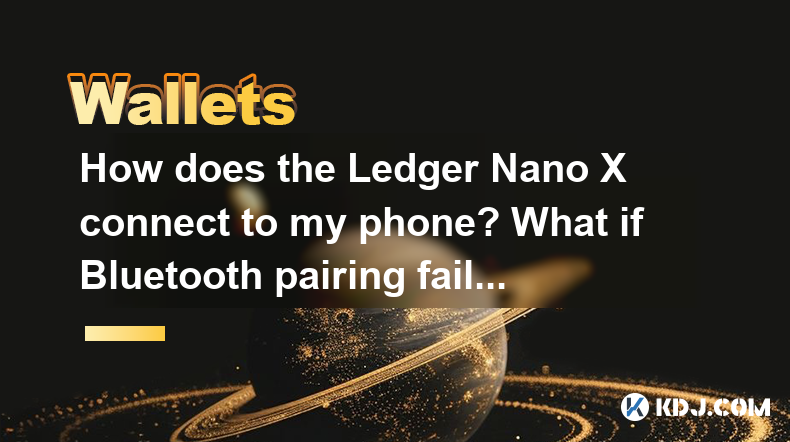
How does the Ledger Nano X connect to my phone? What if Bluetooth pairing fails?
May 02,2025 at 07:07pm
The Ledger Nano X is a popular hardware wallet designed to securely store your cryptocurrency. One of its key features is the ability to connect to your smartphone via Bluetooth, allowing for a seamless and convenient user experience. In this article, we will explore how to connect your Ledger Nano X to your phone and what to do if Bluetooth pairing fai...
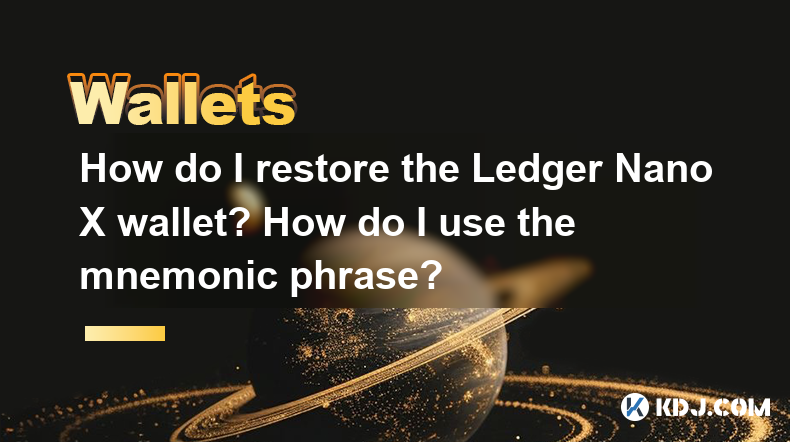
How do I restore the Ledger Nano X wallet? How do I use the mnemonic phrase?
May 04,2025 at 08:07am
Restoring a Ledger Nano X wallet and using its mnemonic phrase are critical processes for any cryptocurrency user. These steps ensure that you can recover your funds if your device is lost, damaged, or stolen. This article will guide you through the detailed process of restoring your Ledger Nano X wallet using the mnemonic phrase, ensuring you can acces...

How do I enable two-factor authentication on the Ledger Nano X? What are the security options?
May 02,2025 at 09:49pm
Enabling two-factor authentication (2FA) on your Ledger Nano X is a critical step in securing your cryptocurrency assets. The Ledger Nano X offers robust security options that enhance the protection of your digital wealth. In this article, we will guide you through the process of enabling 2FA on your Ledger Nano X and explore the various security featur...

How do I export the Ledger Nano X transaction history? How long can the data be saved?
May 04,2025 at 07:21am
Introduction to Ledger Nano X and Transaction HistoryThe Ledger Nano X is a hardware wallet designed to store your cryptocurrency safely. It supports a wide range of cryptocurrencies and offers robust security features. One of the essential aspects of managing your cryptocurrencies is keeping track of your transaction history. The Ledger Nano X allows y...

How does the Ledger Nano X sync with Ledger Live? What if the sync fails?
May 04,2025 at 12:07pm
The Ledger Nano X is a popular hardware wallet that allows users to securely manage their cryptocurrency assets. One of the key features of the Ledger Nano X is its ability to sync with the Ledger Live application, which provides a user-friendly interface for managing your crypto portfolio. In this article, we will explore how the Ledger Nano X syncs wi...

How do I send cryptocurrency with the Ledger Nano X? What are the transaction confirmation steps?
May 03,2025 at 05:01am
Sending cryptocurrency using the Ledger Nano X involves a series of steps that ensure the security and accuracy of your transactions. This process is designed to be user-friendly while maintaining the high level of security that Ledger devices are known for. In this article, we will guide you through the process of sending cryptocurrency with the Ledger...

How does the Ledger Nano X connect to my phone? What if Bluetooth pairing fails?
May 02,2025 at 07:07pm
The Ledger Nano X is a popular hardware wallet designed to securely store your cryptocurrency. One of its key features is the ability to connect to your smartphone via Bluetooth, allowing for a seamless and convenient user experience. In this article, we will explore how to connect your Ledger Nano X to your phone and what to do if Bluetooth pairing fai...

How do I restore the Ledger Nano X wallet? How do I use the mnemonic phrase?
May 04,2025 at 08:07am
Restoring a Ledger Nano X wallet and using its mnemonic phrase are critical processes for any cryptocurrency user. These steps ensure that you can recover your funds if your device is lost, damaged, or stolen. This article will guide you through the detailed process of restoring your Ledger Nano X wallet using the mnemonic phrase, ensuring you can acces...
See all articles




















































































